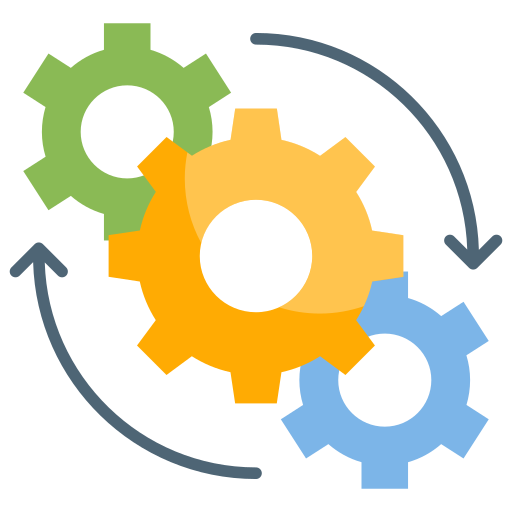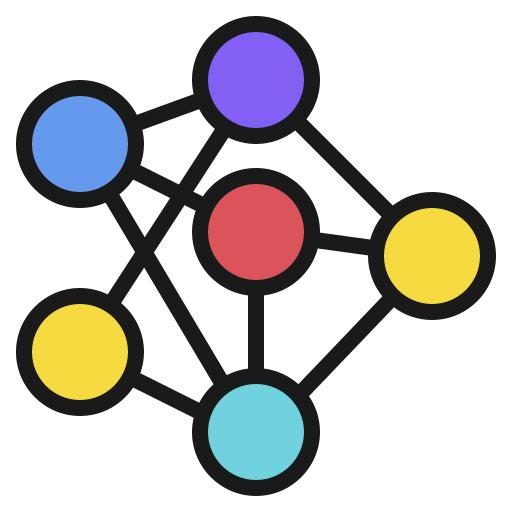Business operating models
Operating models outline how an organisation delivers value through structured processes, resources, and relationships. They define the organisation’s workflow, decision-making, and strategic alignment, ensuring efficient delivery of outputs. A robust model integrates people, processes, and technology to meet customer needs.

Components of an operating model
Each component plays a vital role. Structures ensure clear roles, processes drive efficiency, and KPIs measure success. These elements create an integrated system that aligns resources, capabilities, and strategy, promoting agility, productivity, and value delivery across the organisation.
Organisation structures
Defines reporting lines and roles, ensuring clear accountability and alignment across teams to meet operational goals.
Processes
Standardises workflows for consistency, efficiency, and quality, providing clear steps for executing tasks within the operating model.
Information flows
Enables smooth communication and data sharing across departments, ensuring timely decision-making and alignment on objectives.
Business capabilities
Identifies core competencies needed for success, helping structure resources and skills within the operating model.
Value chain
Outlines activities that add value to customers, guiding prioritisation and resource allocation within the model.
Supply chain
Ensures the timely provision of materials and services, essential for seamless operations and customer satisfaction.
KPI
Measures performance against targets, providing benchmarks that drive accountability and continuous improvement in the model.
Architecture
Establishes the structure of systems and processes, ensuring scalability, flexibility, and resilience of the operating model.
Controls
Implements checks and balances to mitigate risks, ensuring compliance, quality, and financial integrity within the organisation.
Reporting
Provides transparency on performance and operations, enabling informed decision-making and adjustments to the model as needed.
Technological landscape
Supports automation, scalability, and efficiency through appropriate tech tools, directly enhancing operational capabilities.
Lessons learned
Incorporates past insights into current practices, fostering a culture of continuous improvement in the operating model.
Multiple geographies
Adapts processes and structures to regional needs, ensuring consistency and responsiveness across diverse locations.
Leadership
Drives vision and strategic direction, ensuring the operating model aligns with organisational goals and employee engagement.
Governance
Establishes policies and accountability structures, ensuring adherence to strategic goals and operational standards.
Interface management
Coordinates interactions between departments, ensuring seamless workflow and reducing potential bottlenecks.
Knowledge management
Captures and disseminates organisational knowledge, promoting efficiency and informed decision-making.
Business agility
Ensures adaptability to market changes, enabling the model to respond to emerging challenges and opportunities.
Multiculturalism
Enhances inclusivity and innovation, leveraging diverse perspectives in the operating model’s processes and practices.
ED&I
Embeds equity, diversity, and inclusion, fostering a respectful and dynamic work environment aligned with broader organisational values.
AI enablement
Integrates AI tools to drive efficiencies, optimise decision-making, and personalise customer interactions within the model.
Continuous improvement
Embeds an iterative approach to refining processes and outcomes, ensuring the model stays relevant and competitive.
Raw data
Provides foundational insights for analytics, enabling data-driven decision-making and continuous improvement.
Logistics
Manages the flow of goods and services, ensuring timely delivery and operational continuity within the model.
Industry-driven priorities
Organisations in different industries focus on unique priorities based on sector demands and customer needs. Pharmaceutical firms prioritise R&D, compliance, and safety, while retailers emphasise inventory management.
Automotive
- Heavily reliant on a just-in-time supply chain for cost-effective manufacturing and timely assembly.
- Focused on continuous improvement and waste reduction to enhance productivity and reduce costs.
- Emphasis on the lifecycle from R&D to after-sales services, ensuring innovation and quality.

Childcare
- Strict adherence to health, safety, and educational regulations, creating a safe and nurturing environment.
- Organisational structure tailored to maintain regulated staff-to-child ratios for optimal care and oversight.
- Focus on age-appropriate educational and developmental programming to support learning and growth.

Construction
- Organised around project-based work, often requiring cross-functional teams to manage timelines and budgets.
- Efficient allocation of labour, materials, and equipment across various sites to ensure timely project completion.
- Emphasis on health, safety, and environmental compliance throughout all project phases.

Law enforcement
- Immediate, well-coordinated processes to manage and respond to incidents and emergencies.
- Built around fostering public trust and collaboration for crime prevention and safety.
- Cross-functional information flow between units and external agencies to improve public safety and crime-solving.

Management consulting
- Teams organised around client needs, often with flexible structures to adapt to diverse project requirements.
- Emphasis on capturing and sharing insights, methodologies, and best practices across the firm.
- Strong focus on client satisfaction and project success as key indicators of performance.

Pharmaceutical
- Heavily structured around research and development to bring new drugs and treatments to market.
- Adherence to stringent regulatory standards throughout development, production, and distribution.
- Robust, global supply chain to manage sensitive materials and ensure timely delivery.

Recruitment
- Core processes focused on identifying and vetting candidates to meet client requirements.
- Operational emphasis on efficient, high-volume candidate placements for scalability.
- Strong focus on maintaining long-term relationships with both clients and job seekers.

Technology
- R&D and product development are prioritised to keep pace with rapid technological advancements.
- Flexible and iterative workflows to adapt quickly to changes in the market or client needs.
- Heavy reliance on data analytics and insights for continuous improvement and customer-centric enhancements.

“An operating model transforms strategic vision into practical, day-to-day actions, aligning resources and processes to achieve organisational goals.”

Bogdan Ciocoiu
Director
Case studies and resources
Let us stay connected
Keen to be in touch? Feel free to drop us a message on LinkedIn.
